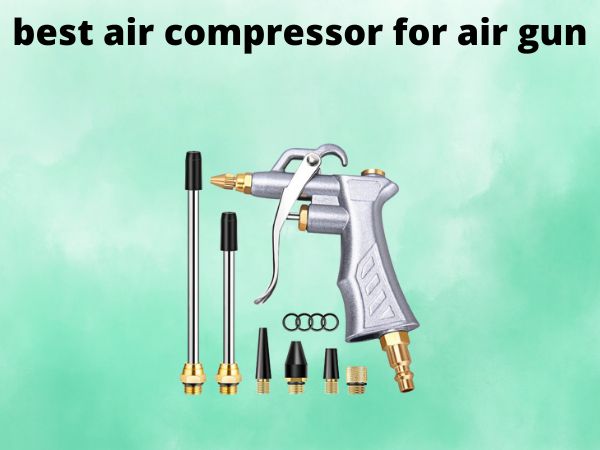How to Adjust Air Compressor Settings Like a Pro
If you’re an avid DIYer, a skilled mechanic, or just someone who loves tinkering with tools, chances are you’ve got an air compressor in your garage or workshop. These versatile machines are essential for powering a wide range of pneumatic tools, from nail guns and impact wrenches to spray paint equipment and more.
But did you know that simply turning on your air compressor and letting it rip isn’t always the best approach? Proper air compressor settings can make a world of difference in terms of performance, efficiency, and the lifespan of your equipment.
In this comprehensive guide, I’m going to take you through the step-by-step process of adjusting your air compressor settings like a seasoned pro. Whether you’re a newbie or a seasoned veteran, these tips will help you unlock the full potential of your air compressor and ensure it runs smoothly for years to come.
Table of Contents
Understanding the Basics of Air Compressor Settings
Before we dive into the nitty-gritty of adjusting your air compressor, it’s important to understand the key components and settings that you’ll be working with. Let’s start with the basics:
Pressure
The primary function of an air compressor is to create and store compressed air, which is then used to power your pneumatic tools. The pressure of this compressed air, typically measured in pounds per square inch (PSI), is one of the most critical settings you’ll need to adjust.
Flow Rate
Another important factor is the flow rate, or the volume of air the compressor can deliver per minute. This is typically measured in cubic feet per minute (CFM) and will determine the types of tools your air compressor can effectively power.
Duty Cycle
The duty cycle refers to the percentage of time the air compressor can run continuously before needing a break to cool down. This is an important consideration, as running the compressor for too long without a break can lead to overheating and premature wear and tear.
Step-by-Step Guide to Adjusting Air Compressor Settings
Now that you have a basic understanding of the key air compressor settings, let’s dive into the step-by-step process of adjusting them:
1. Adjust the Pressure
The first and most important step is to adjust the pressure of your air compressor. This is typically done using a pressure regulator, which allows you to fine-tune the output pressure to match the requirements of your specific tools.
Start by consulting the manufacturer’s recommendations for the ideal pressure range for your compressor and the tools you’ll be using. Then, use the pressure regulator to adjust the output pressure accordingly. Remember to always start on the lower end of the range and gradually increase the pressure until you find the sweet spot.
2. Optimize the Flow Rate
Next, you’ll want to optimize the flow rate of your air compressor. This is particularly important if you’ll be using multiple pneumatic tools simultaneously, as each tool may have different CFM requirements.
Again, consult the manufacturer’s guidelines and the specifications of your tools to determine the ideal flow rate. If you’re unsure, it’s better to err on the side of a higher flow rate, as this will ensure your compressor can keep up with the demands of your tools.
3. Monitor the Duty Cycle
Finally, you’ll need to pay close attention to the duty cycle of your air compressor. This is especially important if you’ll be running the compressor for extended periods or under heavy loads.
Most air compressors have a duty cycle rating, which indicates the percentage of time the compressor can run continuously before needing a break. Exceed this rating, and you risk overheating the compressor and potentially causing permanent damage.
To avoid this, keep an eye on the compressor’s temperature and listen for any signs of strain or laboring. If the compressor seems to be working too hard, give it a break to cool down before resuming use.
Conclusion
Adjusting your air compressor settings may seem like a daunting task, but with a little bit of knowledge and some careful attention, you can unlock the full potential of your machine and ensure it runs smoothly for years to come.
Remember, the key is to start with the manufacturer’s recommendations, then fine-tune the settings based on the specific tools and tasks you’ll be using the compressor for. With a little practice and some trial and error, you’ll be adjusting your air compressor like a pro in no time.
FAQs
How often should I adjust my air compressor settings?
As a general rule, you should check and adjust your air compressor settings whenever you change the tools or tasks you’re using it for. Additionally, it’s a good idea to perform a full inspection and adjustment every few months to ensure the compressor is running at optimal efficiency.
What happens if I don’t adjust the pressure correctly?
If the pressure is set too low, your pneumatic tools won’t have enough power to function properly. Conversely, if the pressure is set too high, you risk damaging the tools and potentially the compressor itself. It’s crucial to find the sweet spot for your specific setup.
How do I know if my air compressor’s flow rate is adequate?
The best way to determine if your air compressor’s flow rate is sufficient is to consult the manufacturer’s recommendations and the specifications of the tools you’ll be using. As a general rule, you want to have a slightly higher CFM rating than the combined requirements of your tools.
What are the signs that my air compressor is overheating?
Some common signs of an overheating air compressor include a hot surface, strange noises, and a decrease in air pressure and flow rate. If you notice any of these issues, shut off the compressor immediately and allow it to cool down before resuming use.
Can I adjust the air compressor settings while it’s running?
It’s generally not recommended to adjust the settings while the air compressor is running, as this can be dangerous and may cause damage to the machine. For safety and optimal performance, always shut off the compressor and depressurize the system before making any adjustments.




